Newton in the Kingdom of Alchemy
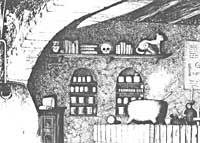
Before analyzing Newton's relations with alchemy and his work, we must first explain what alchemy itself is.
Explaining what is the essence of Alchemy and what is hidden inside is not easy, since alchemy is not the only one. In society, however, there is a stereotyped image of alchemy and alchemist; of the poor who pursue the doration of metals. In this image, as in all stereotypes, there is some reason, but it is far from the deep meaning of alchemy.
That transmutation was among the goals of alchemy (does it exist?) cannot be denied. But this is just a wavelength of the wider spectrum. Furthermore, the word transmutation should not be understood in its strict sense. Transmutation is not only a way to get gold for alchemists, but it has a richer and more complicated meaning. Transmutation includes chemical changes (the desire to know the structure of matter), health processes from illness, the experience of the youth of the elder and the passage from earthly life to supernatural life. In short, in that word alchemy and transmutation there is only one way of understanding life, one philosophy.
According to the German psychologist Jung (and he will not be mistaken), the psychic integration that the alchemist acquired through the practice of alchemy is equivalent to the integration of mystics with god. In the alchemist literature there are examples in favor of this idea. B. Portu Aqitanus (1525-1600) established a relationship between the Christian sacraments and alchemist processes: sacred oils and corruption; ordination and distillation; repentance and calcination; marriage and coagulation; baptism and dissolution; confirmation and sublimation; and Mass and transmutation, of course.
Not everything is mystical
Apart from this unforgettable mystical component of alchemy, the work of alchemy has another more practical aspect. And this practical aspect has largely laid the foundations of chemical science. The daily practice of Alchemy required the development of many chemical processes. Thus, for centuries, alchemists have developed a new chemical, compound and tooling process, while enriching the treasure of chemical discoveries, hidden in a very dark form and terminology.
XVII. By the 20th century alchemy lost much of mysticism by encountering ideas circulating around the world. Alchemy became a mere study of matter.
However, alchemy has not lost all its spirit. Some of the best mechanistic philosophers believe in the theories of transmutation and restructure the material of alchemy based on new ideas.
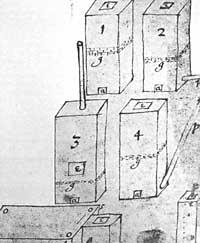
On the other hand, the idea of transmutation is weakening, but more than by mechanicism, it is due to the accumulation of negative evidence. Alchemy weakening occurred in two steps. In the first, alchemy was transparent and chemical through daily practice. In this step he focused on the dark and complicated formulations of yesteryear being given rationally. In the second step, the XVIII. When they lasted throughout the twentieth century, when trying these formulations in search of transmutation, the unavailability of them was seen.
The first step was taken before Newton worked in alchemy.
Finally, it is worth mentioning the XVII. In the 20th century, the Alquimica literature is widespread. Ancient and new alchemic texts were repeatedly published and the manuscripts that were always circulating continued to circulate. Therefore, alchemy came to places where it did not come before. There is no doubt that this influenced the maintenance and chemistry of alchemy.
Ways of alchemy Newton
It cannot be said exactly when Newton became fond of alchemy, although the first sessions on transmutation are dated around 1668. However, when I was studying at Cambridge I may have studied chemistry. On the other hand, it seems clear that his professor Isaac Barrow and Henmore pushed towards alchemy. In addition, as is well known, from the 1650s there were many people at Trinity College as a chemistry or alchemy assay.
Therefore, it would not be surprising that Newton worked with these teams. There is a very significant point in favor of this last idea. At his time as a student at Newton Cambridge, naturalist John Ray, a friend of Barrow, socius studiorum, had a laboratory in Trinity. Apparently, Ray, Barrow and others worked there as alchemists. Therefore, to say that Newton had close relations with the team working in Ray's laboratory (surely he was a collaborator), seems legitimate.
On the other hand, it is not surprising that when Newton was at the King's School in Gratham with chemistry, which was, after all, inseparable from alchemy, he realized that he had his accommodation in Mr. Clarck's house. Mr. Clarck was a pharmacist and pharmacists then needed chemical knowledge to prepare their medications.
However, as we mentioned before, until 1668 Newton did not perform his first sessions, at least if we trust the laboratory notes. It is also possible that some unsigned have been done previously. These initial sessions are a repetition of those described by Robert Boyle in his book "Of formes and transmutation wrought in then".
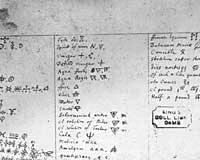
In those early years in which Newton worked in alchemy, two effects are appreciated. On the one hand, that of Boyle and on the other that of the manuscripts that circulated the followers of Hartlibre of London. Newton copied the manuscripts from the grains in order to become aware of the strange language used in them.
By 1668 it can be considered that Newton had profound chemical discoveries. And then he began his alchemist work.
Alchemy Jobs
Although it mayhave other meanings, alchemy studies the changes that matter undergoes. Newton read a lot about alchemy and wanted to look for the common general processes of Art after the baroque and ecleptic language of readings. Therefore, he tried to understand the chemical processes and not the mystique that kept the language of Art. In addition, he performed the reading of alchemic texts along with the laboratory work. All this can be clearly seen in Newton's laboratory notes.
In his first laboratory work he tried to extract "mercury" from metals. At this time, we must immerse ourselves in the theory of alchemy to understand for a time the meaning of this "mercury". Seven metals were known: gold, silver, iron, copper, tin, lead and mercury. They were all dense and bright and the solids, at least in part, were ductile. When the six solids melted, they had some characteristics of liquid mercury. That is why it was said that the seven had a mercury base. (Abstract "mercury" and metal mercury should not be mixed.) A new basis is created to express the differences between metals, "sulfur". This and "mercury" were mixed in different proportions to form metals.
Among the alchemists much was worked for the extraction of "mercury" from metals and Newton began his alchemy work.
Newton began using heat to extract "mercury" from metals. We will mention here two methods from the point of view of modern chemistry. A metal ore or metal compound was heated with a reducing agent and the molten metal appeared at the bottom of the container. It was called "the authentic mercury corridor." It was just a cast metal. As this cooled down it should be evident, but impurities could disguise the nature of the metal. In the other process the metal was treated with volatile mercury sublimate (mercury chloride (II)).
When both substances were heated together, a substitution reaction was produced and the chloride of the original metal was formed on the one hand and the "mercury" on the other. "Mercury" was nothing more than simple mercury, but it was regarded as the "mercury" of the original metal. If the proportion of the original metal exceeded the stoichiometry, what was obtained was the amalgam of the metal, which presented some characteristics of the original metal. That is why the alchemist deeply rooted the idea of who had reached "mercury".
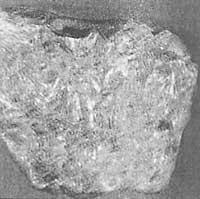
However, in the first sessions Newton used the wet way to extract "mercury". Use of metal solutions in Aqua Fortis (onitric trioxide acid (V)). Nitric trioxide acid dissolves the metal and mercury triooxide onitrate(V) (II) is obtained.
Hg + 4HNO 3 B (NO 3) 2 + 2H 2 O + 2NO 2
Then he added the other metal to the dissolution and as lead, copper or tin are more reducers than mercury, they reduced it by simultaneously passing to dissolution. In this way the metallic mercury, which was considered "mercury", was recovered in the container. However, if reaction conditions were not entirely adequate, mercury (II) was not completely reduced and white oxide Hg 2 O appeared in dissolution. Newton called him limus.
This method has conceptual problems. With lead and tin there are no problems and the solutions are colorless. However, when using copper, the solution is sweetened as copper is dissolved. Aware of what was happening, Newton decided that the wet path was not suitable for the extraction of "mercury".
Abandoned this method, he returned to the dry track and used mercury sublimate to "open" metals and obtain "mercury". It mixed and heated sublimate and metal, metal represented mercury and formed metal chloride and mercury or amalgam. There is no doubt that Newton identified the mercury formed with the "mercury" of the metal, at least if we analyzed his laboratory notes.
Regulus antimonii
Works with antimony have special relevance in Newton's alchemist activity. At that time it was called antimony to the stybnite mineral (Sb 2 S 3). The metal was called regulus antimony. Obtaining antimony through reducing agents is simple. Due to the importance of antimony in gold dams, XVII. For the alchemists of the twentieth century it was a very powerful element of Art. Regulus per se, when the reducer was charcoal. Metals can also act as reducers.
Thus the regime of Saturn (lead), the regular of Jupiter (tin), the regulus of Martitz (iron) and that of Venus (copper) was achieved. If adequate reaction conditions were used in the sintering of the regulus per se, crystalline antimony was obtained. In many cases antimony crystals looked like stars and were then called antimony star (regulus antimonii stellatus).
The regulus antimony star was very important in Newton's alchemy. Why? When you look at the antimony star, take the image that the arms are radiating outwards. However, the alchemists did not. For them the irradiation was made inward, with a "tone of attraction". The lines that radiate inward acquire a special meaning in Newton. His most famous work is the law of gravity attraction and the lines of attraction are concentrated at a central point.
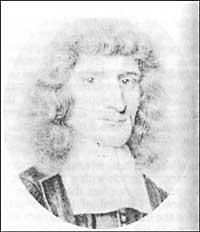
On the other hand, in the regulus of Mars, Newton thought that the sulfuric seed of iron was also in the mercury matrix of antimony. It was an alchemical hermaphrodite, male and female base sum.
Therefore, the star acquired a very special meaning in Newton and, as can be deduced from his writings, thought it could be closely related to the philosophical stone.
Newton did great work around the so-called "Red". The network was called copper regulus. This is another hermaphrodite that combines the male seed of Mars with that of Venus. The concept of network is based on a classic myth: Vulcan surprised his wife Venus with Mars through a net placed around the bed "in flagrant crime". Based on an idea taken from D'Espagnet's book "Arcanum Hermeticae philosophiae opus", Newton thought that through the net he would distinguish "sulfur" from metals – oily fish – and "mercury" – silver fish. The grid would resist sulfur and filter mercury.
How Newton works in the laboratory
If Newton's alchemic writings are analyzed, three steps are observed in his way of working. First, the material to be analyzed was selected. Secondly, he performed a rational analysis of the material in order to understand its meaning. In this step, he compared different writers with each other and with his own experience.
Finally, as a third step came laboratory work. He put into practice what came in the texts.
It should be noted that Newton had a very orderly behavior in the laboratory. I took notes of everything I did and in those notes we know clearly that it was very methodical. It weighed exactly reagents and products, like any current chemistry.
Attitude with Newton's alchemy
So far we talk about alchemy and the work done by Newton in this branch of science. Instead, we have ruled out Newton's attitude towards art. There is no doubt that alchemy for Newton was not seeking gold. Only Egia was what he sought in alchemy.
Newton, a friend raised in mechanistic philosophy, disagreed with him. The approach to the matter of mechanistic philosophy separated the body from the spirit, discarded the spirit from natural processes and explained by moving particles. On the contrary, Alchemy introduces the spirit into nature. Nature is a living machine and all things are created by copulation of males and females. Another point is that, while it is said that mechanistic philosophy needs inert matter, alchemy needs the existence of active principles as the first agent of natural phenomena. Here is the problem of the forces of attraction.
And it must be said clearly that, especially in Newton's "Principia" and being a basic concept in his general science, the idea of attraction between bodies has more than one basis, and one of them, perhaps the main one, is the hermetic tradition.
Another important concept in Newton's science, maturity through heat, also has alchemist bases. Let's take an example:
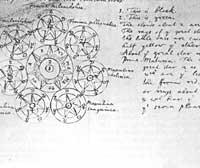
The vapors coming from the Sun, from fixed stars, from the tail of the comets will be collected and fall by gravity effect to the atmosphere of the planets, becoming water and spirit, and from there, gradually, by soft heat, in salt, sulfur, tincture, mud, clays, sands, stones, corals and other substances of the earth.
Newton's ideas about the structure of matter also have alchemy tints. In his opinion, bodies are sets of particles, united by smooth networks (retiform particles he says). Behind this idea you can see the embrace of Martitz and Venus; the sum of base male and female. It also postulates the need for similar gravitational forces between particles.
Conclusion
Newton's work on alchemy is very long and profound. For him the most important work was alchemy, to which fire and flame were associated. On the other hand, these works did not have the same impact as other works of his. But Newton himself can be blamed, because despite alchemy (1,000,000 words, a little from top to bottom) he did not write any scientific articles. He considered that the discovery of Alchemy could not be given into the hands of broad audiences. What consequences would it have had on science if its alchemical works had been published? Answering this question is a kind of science fiction, but considering Newton's shadow...
Buletina
Bidali zure helbide elektronikoa eta jaso asteroko buletina zure sarrera-ontzian











